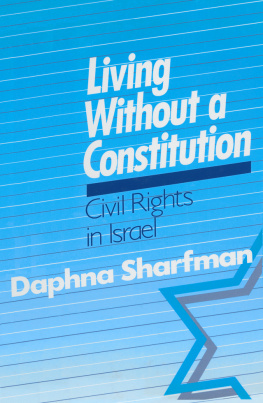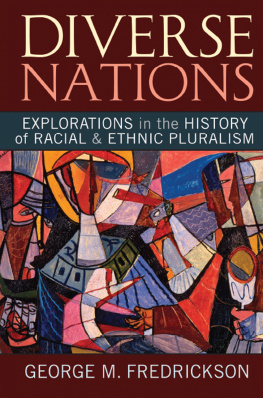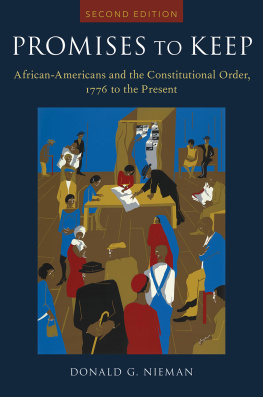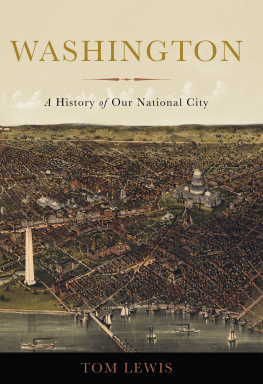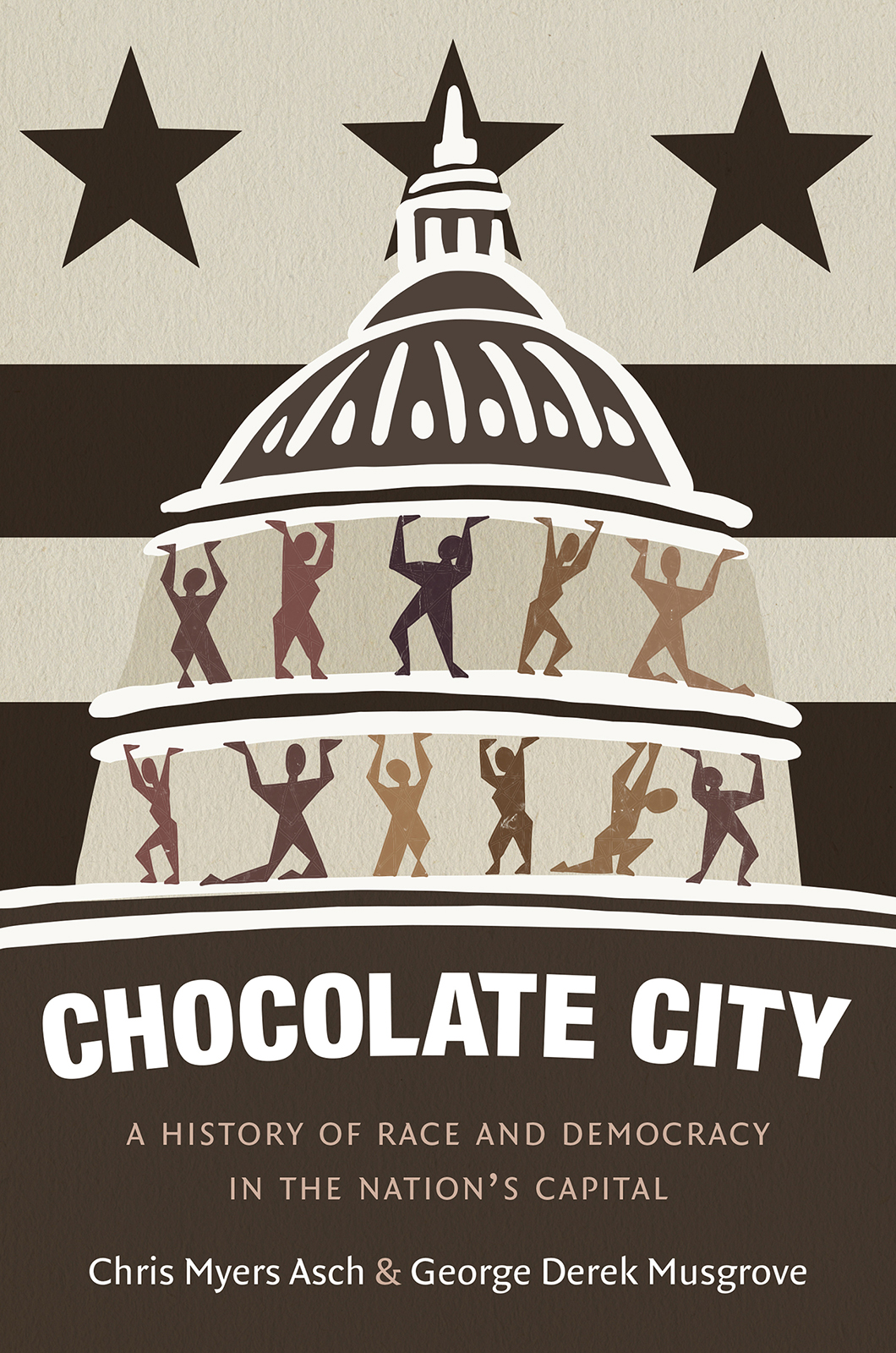THIS BOOK WAS PUBLISHED WITH THE ASSISTANCE OF THE JOHN HOPE FRANKLIN FUND OF THE UNIVERSITY OF NORTH CAROLINA PRESS.
All rights reserved Manufactured in the United States of America Set in Quadraat type by Tseng Information Systems, Inc.
The University of North Carolina Press has been a member of the Green Press Initiative since 2003.
Portions of appeared earlier in somewhat different form in Chris Myers Asch and George Derek Musgrove, We Are Headed for Some Bad Trouble: Gentrification and Displacement in Washington, D.C., 19202014, in Capital Dilemma: Growth and Inequality in Washington, D.C., ed. Derek Hyra and Sabiyha Price (New York: Routledge, 2015), 10735.
CONTENTS
ONE Your Coming Is Not for Trade, but to Invade My People and Possess My Country
A Native American World under Siege, 16081790
TWO Of Slaving Blacks and Democratic Whites
Building a Capital of Slavery and Freedom, 17901815
THREE Our Boastings of Liberty and Equality Are Mere Mockeries
Confronting Contradictions in the Nations Capital, 18151836
FOUR Slavery Must Die
The Turbulent End to Human Bondage in Washington, 18361862
FIVE Emancipate, Enfranchise, Educate
Freedom and the Hope of Interracial Democracy, 18621869
SIX Incapable of Self-Government
The Retreat from Democracy, 18691890
SEVEN National Show Town
Building a Modern, Prosperous, and Segregated Capital, 18901912
EIGHT There Is a New Negro to Be Reckoned With
Segregation, War, and a New Spirit of Black Militancy, 19121932
NINE Washington Is a Giant Awakened
Community Organizing in a Booming City, 19321945
TEN Segregation Does Not Die Gradually of Itself
Jim Crows Collapse, 19451956
ELEVEN How Long? How Long?
Mounting Frustration within the Black Majority, 19561968
TWELVE Theres Gonna Be Flames, Theres Gonna Be Fighting, Theres Gonna Be Rebellion!
The Tumult and Promise of Chocolate City, 19681978
THIRTEEN Perfect for Washington
Marion Barry and the Rise and Fall of Chocolate City, 19791994
FOURTEEN Go Home Rich White People
Washington Becomes Wealthier and Whiter, 19952010
Epilogue | That Must Not Be True of Tomorrow
History, Race, and Democracy in a New Moment of Racial Flux
ILLUSTRATIONS AND TABLES
Illustrations
Tables
ACKNOWLEDGMENTS
This book has its origins in a canceled class. In 2009, George Derek Musgroves African American History course at the University of the District of Columbia underenrolled, and the powers that be terminated the class on the first day. Derek was assigned a new course: History of the District of Columbia. A Baltimore native with no background in D.C. history, he stumbled through the ensuing semester, hurriedly reading any book on the District he could get his hands on just moments before heading to class.
A lover of self-deprecating stories, Derek shared his D.C. History woes with Chris Myers Asch, a D.C. native who had returned to his hometown and taken a position at UDC. We had become fast friends not simply because we were among a tiny handful of thirty-somethings teaching at UDC but also on the strength of our shared history with Freedom Schools. Derek had worked for the Childrens Defense Funds Freedom School Program for much of the 1990s, and Chris had cofounded and run the Sunflower County Freedom Project, a nonprofit program in rural Mississippi modeled on the Freedom Schools of the 1960s.
Derek encouraged Chris to join him in tackling the D.C. History course, and we jointly rewrote the syllabus. Teaching the course and interacting with our students deepened our love for the District, a beautiful, quirky, complicated, and sometimes maddening place too often mocked and misunderstood by outsiders. Like many native Washingtonians and longtime residents, we have a fierce pride in the city, despite (and perhaps because of) its flaws and fissures, particularly along racial lines. We wanted to tell our citys story, warts and all, and we thought that the two of usone white and one black, both historians of race in Americacould write a compelling, insightful history that would help all Americans understand their nations capital.
For six years, we have labored together on this project. Life intervened repeatedly in the writing process. Our families grew, we changed jobs, we bought and rehabilitated beat-up old houses. At times the demands became too much. For a duration, Derek had to stop writing almost entirely, leaving Chris to write the first half of the book by himself. But throughout, the project was held together by a rich friendship, our love of D.C., and a broad vision of democracy that promises self-determination for the poor as well as the rich, the woman as much as the man, the black the same as the white.
The book that you are reading now owes a tremendous debt to the many wonderful teachers we have had throughout our lives. For Chris, two teachers from his days in D.C. public schools stand out. His eighth grade English teacher at Alice Deal Junior High, Rita Miles, pushed him to think about audience, rhythm, and sentence structure more than any teacher he had in college or graduate school. Ms. Miles spent more than four decades turning unfocused middle schoolers into sharp writers. His eleventh grade AP U.S. history teacher at Wilson High, Erich Martel, gently prodded him to think critically about sources and challenged him to question his assumptions. Though soft-spoken in class, Mr. Martel has a spine of steel and has stood up for his students and his principles in countless battles against school officials. Derek must thank the journalist and student of D.C.s go-go scene, Natalie Hopkinson, who challenged him to write for a general audience, offering biting but incisive commentary.
A book of this scope also incurs tremendous intellectual debts. We build on the work of many dedicated scholarsincluding Constance McLaughlin Green, Letitia Woods Brown, Howard Gillette, Kate Masur, and otherswho have contributed deeply researched books, articles, and dissertations that have helped us understand the richness and complexity of race and democracy in D.C. Please read the Essay on Sources to learn more about the intellectual foundations of the book and the shifting interpretations of D.C. history in the past century.
The field of D.C. history is blessed not only with scholars but also with a wide range of students, bloggers, and local history aficionados who have spent years writing articles, interviewing community members, rummaging through old newspapers, defending local landmarks, and telling the stories that preserve our citys history. Often unsung, these local historians produce the types of fine-grained, in-depth studies that give texture and nuance to sweeping narratives such as this book.



